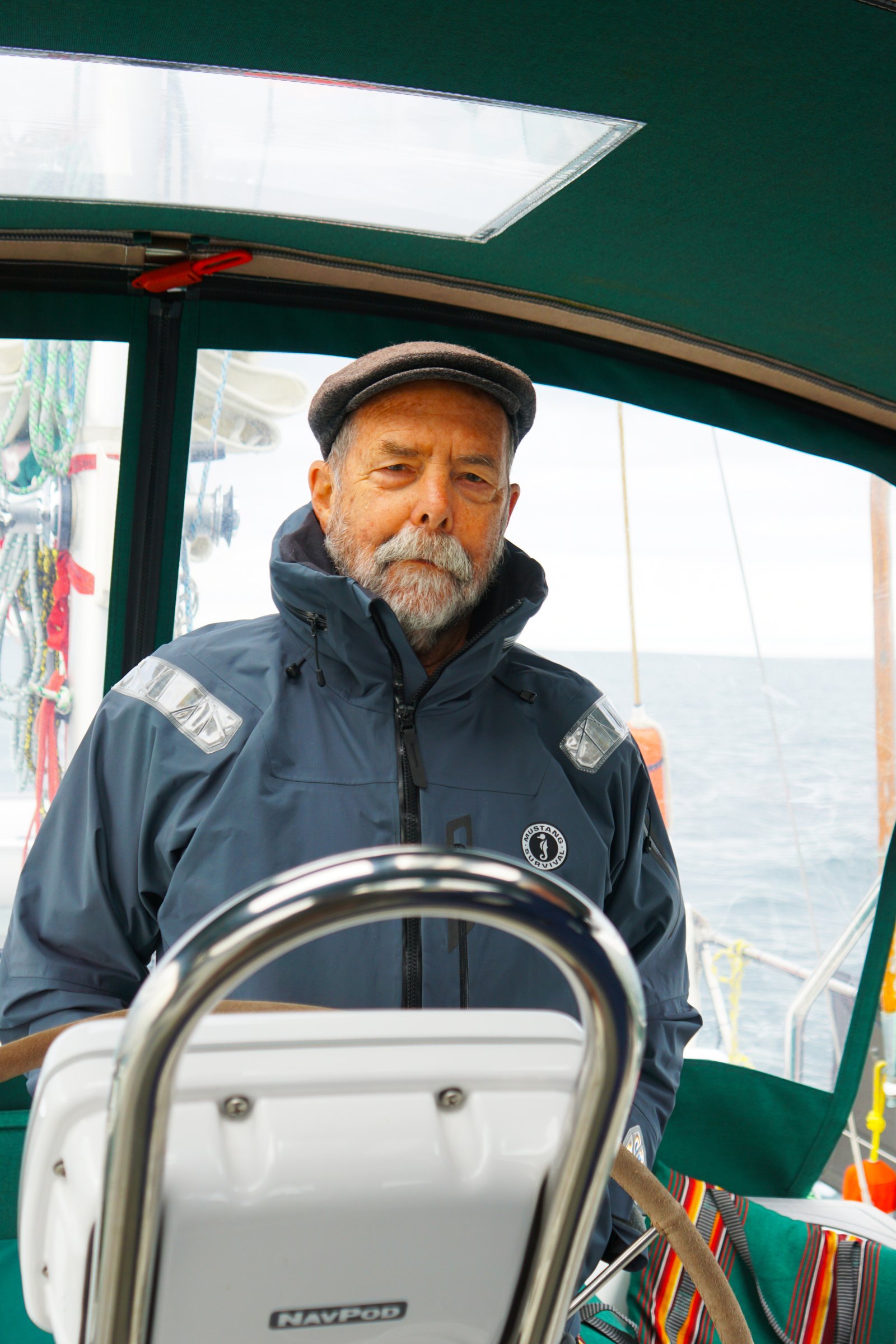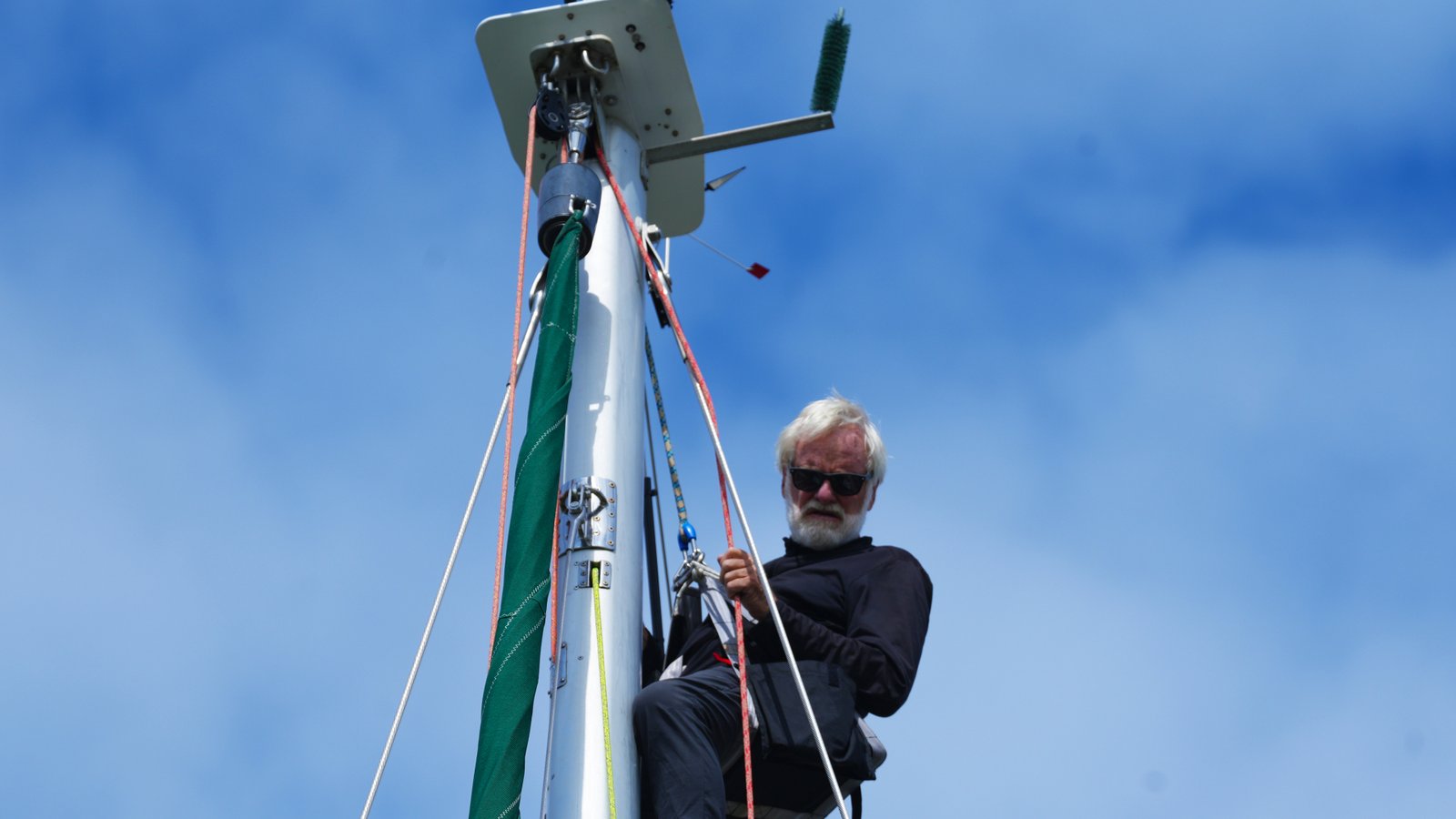July 2025
Reporting live (well, anchored) off Utqiagvik—formerly known as Barrow—where it’s a brisk 15–20 knots of wind and colder than the inside of a refrigerator. The Arctic seawater is also hovering around 38 degrees, and wind chill representing the inside of a freezer. We had a solid run up from Teller, Alaska, and are now waiting out a stubborn patch of ice before we can punch east into the Northwest Passage.
Nome Recap: Exploration, Repairs & Project Madness

Nome didn’t disappoint. Between the wild tundra vibes and friendly locals, it was an excellent stopover for rest, repairs, and a solid round of checking over One Ocean. With our new crew Dave Logan who was the engineer on the previous expedition 15 years ago, we hit the ‘tourist’ locations, checked out a couple of restaurants, and found a few local watering holes for our favorite beverages. It’s great to get stories and compare the two different boats traveling the exact same routes.
And let’s be honest—if you’re a mechanic, the real showstoppers in Nome aren’t the sights or souvenirs. It’s the gold dredges. Floating mechanical Frankensteins with everything from monster engines and equipment to utilize giant suction hoses to pull material & gold off the bottom of the ocean. They’ve got it all:
- Diesel and propane boilers
- High-pressure water pumps
- Sluice boxes sorting real-deal Alaskan gold
- Commercial diver equipment
- Outboard engines
- Hydraulics, plumbing, and enough hoses plumb a small city
Basically, if it moves, spins, pumps, or leaks oil—they’ve got it, usually installed on top of a pontoon boat designed for cruising in a lake.
Plenty of Inspections
Mast:
Mark went aloft and did a full eyeball check after our first 3,000 NM. I’m grateful he still likes going aloft. I’m rather afraid of going up and prefer only to do it if absolutely necessary. Verdict: mast still vertical, nothing falling off, and by our calculation completely as it should be. Win!
Steering:
We popped open the access panel and gave everything a good look. Found the cables needed a bit of tightening—pretty normal when they've been disturbed during a previous install or replacement. We had to remove these cables completely at the Marine Technology Center for inspection and to get the engine out of the boat. Nothing like a little cable yoga in the lazarette to keep the day interesting.
Engine Room Checklist:
Here’s what we regularly check mid-passage (because we like our engine purring and depend heavily on it)
- Shaft packing
- Under-engine look-around
- Hynautics fluid level & pressure
- Coolant recovery bottle
- Serpentine belt condition
- Fuel filter bowl
- Fuel vacuum gauge
- General sniff test for “new” smells
- Battery voltage & alternator output (Victrons our truth-teller)
- Image
 Yet another water leak!
Yet another water leak!
The Curious Case of the Water Under the Engine:
Right before Nome I spotted water under the engine. Diagnosis took a bit—turns out it was a loose water-maker clamp (only leaked during water-making, about an hour/day). Easy fix!
Then, halfway through the passage—boom, more water. Found the culprit: another loose fitting in the vented loop before the exhaust elbow. A quick hand twist later, and the mystery was solved. Cue the big sponge. (The drip pan has no bilge drain—sponge for small jobs, DeWalt battery vac for the big spills.)
Generator Woes (Of Course)
Ran it ~20 hours in Nome at the dock due to cloudy skies and zero shore power. Not terrible—brings the total to 52.9 hours.
Still chasing down pesky fuel leaks that are almost as annoying as a mosquito in your bunk. Fixed two more in Nome: a loose banjo fitting and the fuel filter housing. I swear by light blue shop towels for leak hunting—they turn dark blue with any fluid contact and make detection a breeze. Sadly, none aboard, so I was stuck with basic paper towels. Primitive times, but still hugely helpful in finding the leaks.
The Boat Was Going… Backwards?
Yep. We left Nome, fired up the chartplotter, and boom—the boat symbol was pointing astern. Outside helm fixed itself before we even left the harbor. Inside helm? Nope. Our Garmin 7616 touchscreen plotter (came with the boat) had lost its mind. New outside Garmin 9” was working fine, but the inside boat icon insisted we were moonwalking backward across the Arctic.
We did the usual: reset, reboot, breaker check, etc. Nada.
Then came the overthinking.
I kept asking myself:
“When did it last work?” – Between Dutch Harbor and Nome.
“What did we do in Nome?” – Aha! We added eight SWIFT buoys under the helm station—each with magnetic switches. Could they be interfering? They were stored directly under the chartplotter.
Tess pulled them all out. Still no dice. Grrr.
- Image
 Best to install correctly...
Best to install correctly...
Eventually I remembered: we installed a satellite compass on the stern rail before departure at SVC… and I had reconnected it in Nome. Yep. Plugged it in without checking orientation. Guess what? It was installed 180° backward. The Garmin label? Should’ve faced forward. Flipped it around—and poof! Back to facing the right direction.
Moral of the Story:
- Ask good questions when troubleshooting.
- Always try to figure out what has changed.
- Document your installs.
- And always, always read the dang manual.
Diesel Fuel: The Nerdy Bit
Tracking fuel is very important for us with limited access to fuel up north. We sailed ~175 NM and motored ~70 hours at a fuel-sipping 1600 RPM. Our math? Spot on. Estimated range: 1250 NM. Reality? Might be even better.
We’ve got about 750 NM range left—perfect since it's ~500 NM to Tuktoyaktuk. Bonus: they have a dock and a truck that drives fuel straight to the boat. We can motor the entire way if the wind gods completely ignore us on the next passage (or go completely against us)…
What’s Next?
As soon as the ice clears, we head east. Weather looks promising—might even see a tropical 60°F in the next week or two! Of course, this is a boat, so we’ll probably uncover some new gremlin 10 minutes after setting off. But we’ll fix it. That’s just what we do.
Until next time,
– Mike

